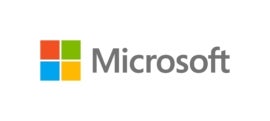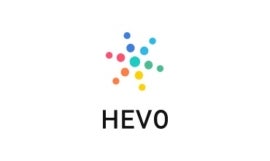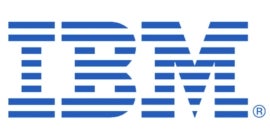Top 10 data migration tools of 2023
As your technology and data use cases evolve, so too does the complexity and the volume of data that you store, process and share. In many cases, your legacy data storage systems and applications cannot handle this increased volume while simultaneously ensuring your data is secure and accessible.
The solution that many businesses are turning to is migrating data to more advanced and high-capacity storage setups, but with so many different types of files, formats, devices and systems involved in the transfer process, many businesses hesitate to get started with a data migration plan.
SEE: Data migration testing checklist: Through pre- and post-migration (TechRepublic Premium)
Although data migration is often a grueling, tedious and time-consuming process, with the right data migration tools at your disposal, it doesn’t have to be. Data migration tools can automate various data migration and management workflows, offer self-service interfaces to your team, and offer other features that make the data migration process more secure and seamless. In this guide, we cover some of the top data migration tools for businesses of varying sizes and backgrounds.
Jump to:
Top data migration tools
AWS Database Migration Service
Amazon Web Services offers a variety of data migration tool sets, but one of its standout service tools is AWS Database Migration Service. The service allows you to migrate different types of workloads — applications, websites, databases, storage setups, and physical or virtual servers — as well as data centers from an on-premises environment, hosting facility or another public cloud environment to AWS.
With this tool, your source database stays active throughout the migration. This reduces downtime for apps that depend on the database and allows you to migrate the database quickly and securely. Furthermore, this service can transfer data to and from the most commonly used commercial and open source databases.
Read our full review of AWS DMS here.
Features
- AWS DMS Fleet Advisor helps automate migration planning, streamline database and analytics fleet transfer to the cloud, and suggests optimal migration pathways.
- Provides several ways to transfer files in and out of AWS through online data transfer methods.
- Using the Snow product line, you can transfer data in and out of AWS via offline methods.
- Enables both homogeneous and heterogeneous migrations, which means you can move data between both similar and different database providers.
Pros
- Supports migration between over 20 databases and analytics engines.
- Highly scalable and easy to set up.
- User-friendly.
Cons
- Data type conversion could use some improvement.
- Some users find this tool pricey.
Fivetran

Fivetran is a cloud-based ETL data migration tool that lets data engineers spend more time generating insights and less time on tedious engineering tasks. With connectors that deploy in a few minutes, automatically adapt to source changes and require zero maintenance, Fivetran simplifies data migration by automatically taking care of all data integration tasks.
In addition, it enables users to centralize and streamline their data operations, including database and application integration, process orchestration and metadata management.
Read our full review of Fivetran here.
Features
- Connectors offered for various data sources, including applications, data warehouses, databases, functions, events and files.
- Uses dbt core to monitor pipelines, load data and prompt dbt models to transform data.
- Users can automate and orchestrate their data workflows via the Fivetran dashboard.
Pros
- Supports multiple data sources.
- Intuitive user interface.
- Efficient user support representatives.
- Comprehensive documentation.
Cons
- Connectors don’t offer support for data lakes.
- Some users consider this tool expensive.
Microsoft Data Migration Assistant

Data Migration Assistant, or DMA is a tool from Microsoft that enables you to upgrade your database schema and data from a source SQL Server environment to a target SQL Server environment. With this migration tool, you can move schema, data and uncontained objects from your source server to your target server.
The best part about using this tool is that it will help you identify compatibility issues that may impact functionality in your new SQL Server database version. DMA automates database migration, while simultaneously maintaining minimal downtime. It also provides support for Microsoft SQL Server, MySQL, PostgreSQL and MongoDB migration to Azure from on-premises and other cloud environments.
Features
- Ability to analyze on-premises SQL Server instances migrating to Azure SQL database (s).
- Identifies and resolves compatibility issues blocking migration from on-premises SQL Server database(s) to Azure SQL Database(s).
- Identifies partially supported or unsupported features used on the source SQL Server instance.
- Detects issues, such as behavior changes and deprecated features, that may affect migration to an on-premises SQL Server.
Pros
- Ease of use.
- Fast migration process.
- Issues detection.
- Highly scalable and adaptable.
Cons
- The interface could be improved.
- First-time users may need to invest more time in learning how to use the tool.
Dell EMC Intelligent Data Mobility

With Dell EMC Intelligent Data Mobility, users can manage workloads and data migration by leveraging technology, automation and Dell EMC expertise.
This solution is built on modern architecture that delivers a flexible design. It also integrates seamlessly into current business needs, with comprehensive coverage from capture to consumption. This provider’s methodology is built around three pillars: Discovery, planning and execution.
Features
- Data migration in discovery, planning and execution phases.
- Extensive automations and workflows.
- Support for remote data transfer of up to 35TB, across up to 15 Hosts and 15 LUNs per host.
Pros
- Customizability.
- Accelerates time-to-value.
- Offers in-region and remote resources.
Cons
- Documentation could be improved.
Hevo

Hevo is a cloud-based, no-code data migration platform that simplifies migration from legacy platforms to modern data storage solutions. Users can replicate data from over 150 connectors and migrate it into databases, data warehouses and other analytic tools such as Hadoop, SQL Server and Amazon Redshift.
Hevo specifically allows you to preload transformation and overrides auto schema mapping. With this feature, you can leave the app to do its own tweaking to get your data ready for migrations. With a suite of features aimed at speeding up your processes and saving time, Hevo also allows you to monitor your workflow to resolve any issues before they disrupt business operations.
Read our full review of Hevo here.
Features
- Supports pre-load and post-load data transformation.
- Automated schema management syncs your data destination regardless of changes in source data.
- Supports three ingestion modes: Log-based, Table and Custom SQL.
Pros
- Drag and drop interface for non-technical users.
- Intuitive and easy-to-use interface.
- Easy setup and configuration.
- Seamless data integration.
- Highly-rated customer support team.
Cons
- Its knowledge resources — documentation and video tutorials — could be improved.
- The pipeline scheduling feature could use some improvement.
Integrate.io (Formerly Xplenty)

Integrate.io is a data migration tool that provides users with a single interface for migrating, transforming and managing data between different applications. This tool helps organizations integrate, process and prepare data for analytics on the cloud. The solution is scalable and cost-effective, with an intuitive interface and a highly-automated workflow.
Integrate.io’s ease of use enables users to focus on their business without worrying about the complexities of data migration. Integrations are available via REST API or direct FTP uploads to make it possible for even non-technical personnel to work seamlessly with their technology stack while using this tool.
Read our full review of Integrate.io here.
Features
- Supports over 200 data sources.
- Supports data movement into Hadoop HDFS, MongoDB, SQL Server, Elasticsearch and Redshift.
- Uses REST APIs to connect to any data source.
- Encrypts data at rest.
- Offers round-the-clock customer support.
Pros
- Responsive support.
- Ease of use.
- Intuitive user interface.
Cons
- The error debugging process could be improved.
- Some users consider the tool pricey.
IRI NextForm

IRI NextForm is a data migration tool built on Eclipse. This tool can migrate, reformat, convert, replicate, federate and report data from one system or format to another. In addition, it can move information from legacy systems into new environments and upgrade old database engines and other components that may not have native export capabilities.
Read our full review of NextForm here.
Features
- Able to structure previously unstructured data.
- Remaps data types, record layouts and file formats.
- Built-in report generation.
- Cross-platform format allows it to run on Windows, Unix and Linux systems.
Pros
- Converts over 100 data types.
- Offers a free edition.
- Extracts values and metadata from document file formats such as HTML, Microsoft Office and PDF.
Cons
Stitch Data

Stitch Data from Talend is an ETL tool that helps you transform, cleanse and prepare your data so it’s ready for analysis. Stitch can also extract and load structured or unstructured data from various sources like databases and spreadsheets.
With these capabilities, you can execute your analytical workflow in a single tool. With its diverse connectors, Stitch provides customers with an easy way to migrate their complex databases without coding.
Features
- Supports popular databases such as MySQL, PostgreSQL, SQL Server, Oracle and Amazon Redshift.
- Offers over 130 connectors.
- Automates data ingestion.
Pros
- Easy to set up and configure.
- Easy to generate reports.
- Not as expensive as many competitors.
Cons
- The user interface could be improved.
- Steep learning curve.
IBM Informix

IBM Informix is a Data Migration solution that works with SQL commands and migrates data from one IBM Informix database or operating system to another.
Integrating SQL, NoSQL, JSON, time-series and geographic data is made simpler with IBM Informix’s migration tool. It also has an intuitive GUI that simplifies workflows, allowing users to migrate data between various database types and platforms.
Read our full review of IBM Informix here.
Features
- Offers self-management and automated administrative capabilities for edge, cloud and on-premises analytics.
- Real-time analytics.
- Automated data management.
- Offers high availability data replication (HADR).
Pros
- Easy to maintain.
- High scalability and availability.
- The setup process is relatively simple.
Cons
- Platform tends to be slow during big data transfers.
- Some users find the tool pricey.
Matillion

Matillion is a cloud-based ETL solution that enables you to migrate data between systems, databases and platforms. This tool primarily lets you load, transform, sync and orchestrate data in a centralized location with built-in analytics capabilities.
In addition, Matillion allows users to sync data back to business and operational applications through reverse ETL with pre-built connectors. They can also manage complex pipelines through a single dashboard and customize ETL for organization-specific infrastructure.
Features
- Offers low code/no code GUI.
- Users can create their own connectors.
- Supports Amazon Redshift Spectrum, Amazon S3 components, Amazon SNS and SQS alerts.
- Compatible with Azure Synapse-specific functionalities, such as reading from Blob Storage and alerts and notifications through Azure Message Queues.
Pros
- Easy to use.
- Drag and drop functionality.
- Responsive support team.
- Users find the platform stable.
- Extensive native connectors for different applications.
Cons
- Some users consider this tool pricey.
What is data migration?
Data migration is the process and strategy for transferring data from one system, database or storage device to another environment or setup. It can be used in various situations, such as when new hardware needs to be set up and old hardware needs to be decommissioned or when a company is working to move all of its workloads to the cloud.
SEE: Best practices to follow for data migration (TechRepublic)
In addition, when upgrading to new software versions, companies will often migrate their existing data to continue using it in their new environment without rebuilding everything from scratch.
Key features to look for in data migration tools
There are many factors to consider before deciding which tool to use for your data migration project, but here are some key features you should look out for.
Scalability
A data migration tool should be able to scale based on your business needs as they grow or change. During your search, look for a data migration tool that can be scaled up or down depending on your requirements. Otherwise, you’ll need to upgrade your service constantly, which will prove very costly and time-consuming.
Compatibility with multiple sources and destinations
A good data migration tool will allow you to migrate from multiple sources and destinations simultaneously, saving time when setting up new connections and users. It’s also helpful when migration software is integrated with various cloud storage providers, such as AWS S3 or Google Cloud Storage, so it’s easy to switch between providers if you use them for backup purposes.
Interoperability with legacy systems
Legacy systems have their own formats and schema that don’t always translate well to new destination formats. Thus, it’s essential to have an easy way to convert those old data formats into what is needed for the new system. The best data migration tools provide plug-ins or modules that easily convert those files into necessary formats while keeping all the original content available and secure.
Integration with third-party products
Some companies use third-party products, like SharePoint to store documents or Outlook as an email client, but these products may not work well if your organization chooses to migrate away from Office 365. To make this transition easier, find a tool with integration capabilities that span across product suites and solutions that are most important to your business.
Self-service deployments
With many data migration solutions, it’s common to join a long waitlist before your data gets migrated. However, with self-service deployments, customers can set up the task and workflows themselves by downloading the application and following a series of steps.
SEE: A guide to the roles and responsibilities of the data migration team (TechRepublic)
More complex data migrations may not be a good fit for self-service migrations, but regardless, it’s still important to find a vendor that offers the right amount of flexibility and access for your team.
Flexible pricing models
Pricing models vary widely across data migration solutions; some charge per gigabyte of space used during migration, while others charge based on workloads per hour. Make sure you know how much data you’re migrating, what kind of data you have and what your system requirements are before you select a data migration tool. Chances are, one will be priced more favorably for what you need, even if it doesn’t look the most affordable at the surface-level.
Documentation and training
A self-help guide explaining how to use the product will save time and frustration in figuring out how to get started, especially when working with more advanced features, such as scripting languages and APIs. Migration companies that offer training videos, workshops and dedicated support specialists should also be considered, depending on the complexity of your migration project.
Automated workflows
Data migration involves moving vast amounts of data and often includes complex processes. It’s a good idea to find a tool that offers an automated workflow to streamline those processes.
Auto-detection of missing items
Auto-detection of missing items saves valuable time when dealing with an extensive database or repository. This means that when something goes wrong — like you’ve accidentally deleted a row of data — the program will detect this error and pause the entire process as soon as possible.
General ease of use
Consider ease of use when you are evaluating a prospective data migration tool. You will spend a lot of time on this interface, so it should be easy to use and user-friendly.
Security
Security is always a top priority when looking for new products or services, and data migration tools are no different. When assessing security, consider if sensitive data can be transferred securely between sources and destinations. Look for authentication methods such as multi-factor authentication and encryption schemes.
How to choose the right data migration tool
In order to choose the right data migration tool, you need to consider your business-specific needs and how much time and resources it will take for your organization to perform necessary migration tasks. It is also important to remember that some tools can only be used on one type of device, while others can work across all kinds of platforms. A comprehensive tool that supports all platforms is ideal if you’re migrating a mixed environment of server, desktop and mobile device data sources.
SEE: Data governance checklist for your organization (TechRepublic Premium)
As far as pricing goes, it usually depends on the number of users in your company and whether you want to use an online or offline solution. Other factors to consider include the file formats you plan to migrate as well as bandwidth constraints. TechRepublic recommends that you shop around and compare products before making decisions. Most importantly, read customer reviews for each product to determine what works for your specific line of business and data needs.
Read next: Top data integration tools (TechRepublic)
For all the latest Technology News Click Here
For the latest news and updates, follow us on Google News.
